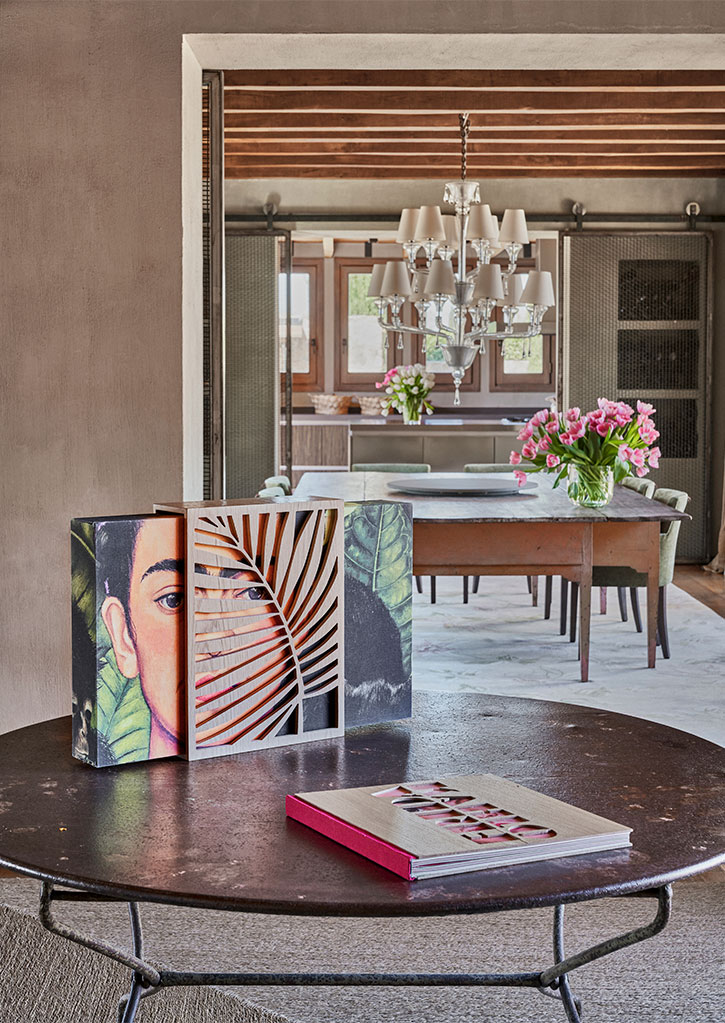Frida Kahlo, la artista que se despidió con un «Viva la vida»
Frida Kahlo (1907 – 1954) nació y murió en el mes de julio. Los problemas de salud fueron una constante en su corta vida, y también conoció el dolor del desengaño y el miedo a la soledad. Sin embargo, siguió pintando hasta sus últimos días. Hoy es una de las artistas más influyentes de todos los tiempos.
El poder de la imaginación
Transgresora, vital e infatigable, Frida Kahlo no se rindió ante la adversidad. Si el dolor (físico o moral) la atenazaba, o si su cuerpo la obligaba a permanecer postrada, ella se aferraba a sus sueños y seguía creando belleza sobre el lienzo.
Pocos autorretratos en la historia muestran el espíritu tenaz de un artista como La columna rota (1944). Vemos el cuerpo de una mujer que aún sufre las secuelas de un terrible accidente, ocurrido cuando tenía 18 años. Pero su rostro, pese a las lágrimas, destila una seguridad desafiante.
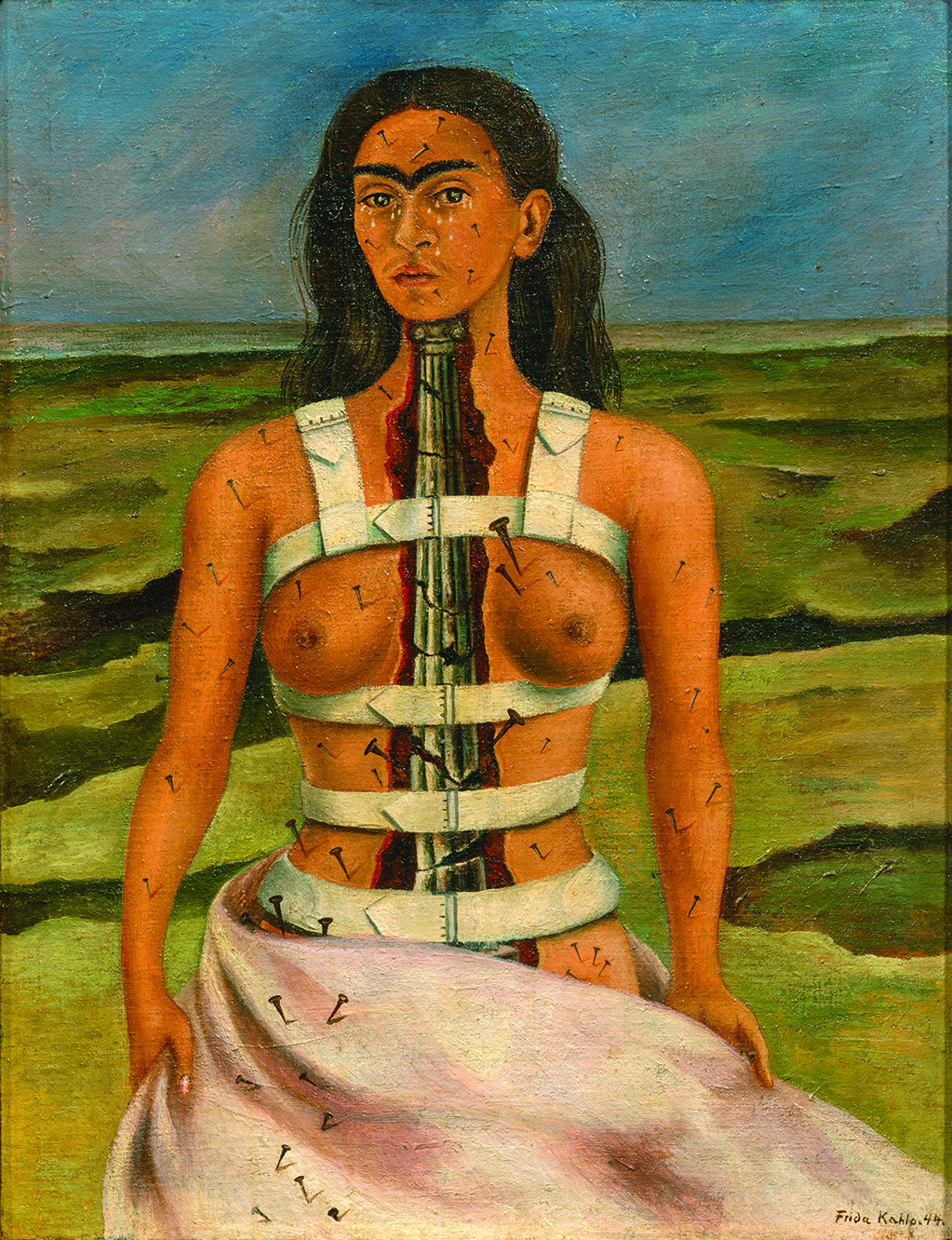
La columna rota, 1944. Óleo sobre masonita, 39 x 30,5 cm. Museo Dolores Olmedo, Ciudad de México.
© Album
© 2021 Banco de México Diego Rivera & Frida Kahlo Museums Trust. Av. 5 de Mayo No. 2, col. Centro, alc. Cuauhtémoc, c.p. 06000, Mexico City
Debido a sus dolores crónicos de espalda, Frida empezó a llevar el corsé que le habían prescrito. En esa época tuvo que dejar de ir a la Academia de Arte a impartir clases de pintura, pero hizo el esfuerzo de invitar a sus alumnos a su casa, en Coyoacán, para seguir con el curso.
Pasiones y esperanzas
También su relación con Diego Rivera era una fuente de sufrimiento. Aunque en apariencia Frida aceptaba las aventuras amorosas de su esposo, cuadros como Diego y yo (1949) revelan los verdaderos sentimientos de la artista.
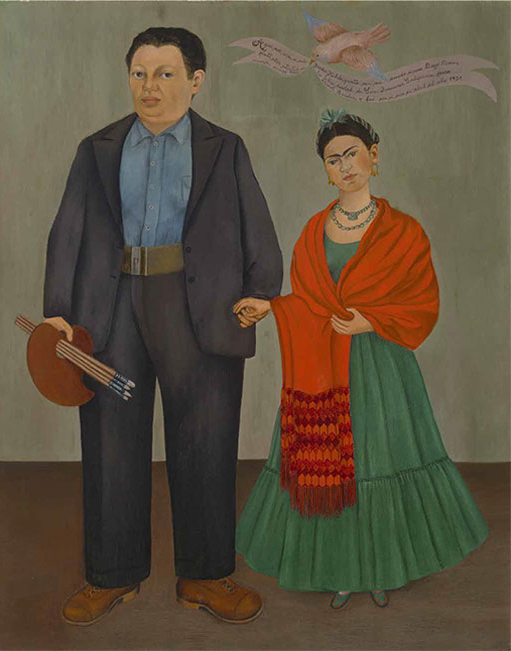
Frida Kahlo y Diego Rivera, 1931. San Francisco Museum of Modern Art, colección Albert M. Bender
© Album/Fine Art Images
© 2021 Banco de México Diego Rivera & Frida Kahlo Museums Trust. Av. 5 de Mayo No. 2, col. Centro, alc. Cuauhtémoc, c.p. 06000, Mexico City
Después de siete operaciones en la columna se tuvo que instalar un caballete especial que le permitía pintar acostada en la cama. Así realizó el Autorretrato con el retrato del Dr. Farill (1951), dedicado al cirujano que consiguió, en parte, aliviar su dolor.
Este cuadro evoca también una de las influencias de Frida: los exvotos mexicanos, con una gran tradición en el arte popular.
Su única exposición individual
En los años 50 ya no podía trabajar sin ayuda de analgésicos. Poco a poco, su pincelada se volvió menos minuciosa, y empezó a pintar más naturalezas muertas que retratos.

Naturaleza muerta con perico y bandera, 1951. Óleo sobre masonita, 28 x 40 cm. @wikicommons.
En 1953 se celebró en Ciudad de México la primera exhibición exclusiva de obras de Frida Kahlo, que en muestras anteriores había compartido espacio con otros artistas. Sin embargo, los médicos le prohibieron que se desplazara hasta la exposición, instalada en la Galería de Arte Contemporáneo de Lola Álvarez Bravo.
Por supuesto, su espíritu rebelde se abrió paso y pidió que se trasladara su cama especial a la exposición. Acudió a la cita en ambulancia, vestida con su vestido tradicional. Frida quedó asombrada por el éxito de la muestra y la gran acogida del público.
Alas para volar
Unos meses después de la exposición llegaron sus momentos más amargos. Debido a problemas que arrastraba desde niña, tuvo que sufrir la amputación de su pierna derecha hasta la rodilla. Poco antes de la operación plasmó sus temores en Las apariencias engañan (1953), donde dibujó lo que ocultaba bajo sus ropajes: su columna herida y la pierna enferma.
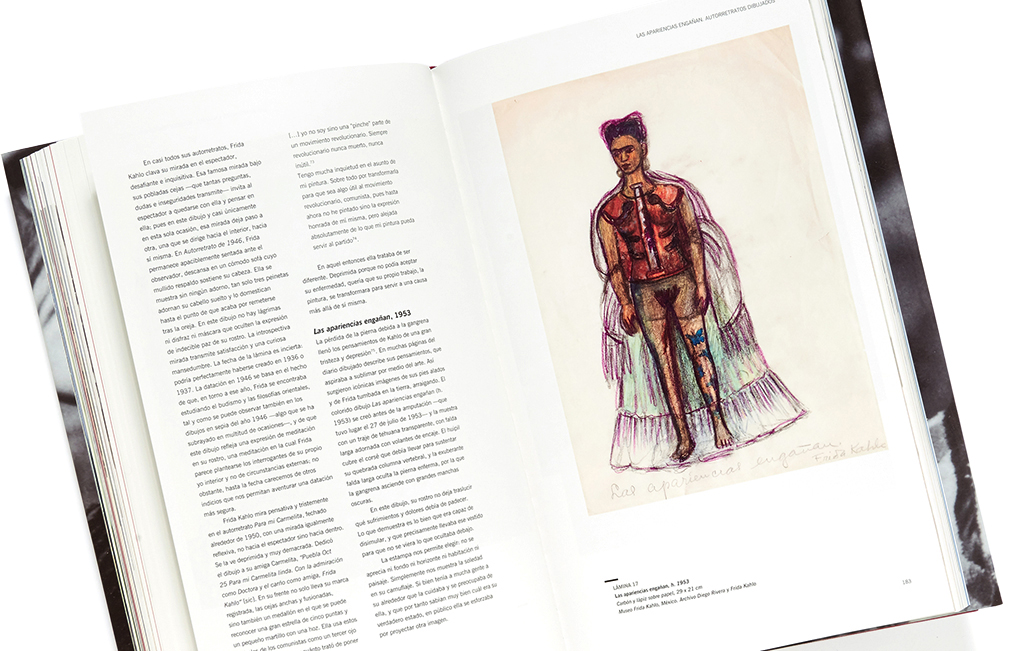
Las apariencias engañan, 1953. Detalle del Libro de Estudios de Los sueños de Frida Kahlo.
Después de la amputación aprendió a caminar pequeñas distancias con una prótesis. En su diario, junto a un dibujo de su pierna perdida, anotó: Pies para qué los quiero. Si tengo alas para volar (1953).
El adiós de Frida: Viva la vida
Durante sus últimos meses apenas salió de la cama y el dolor acabó por quebrar su estado de ánimo. Sin embargo, tomó los pinceles por última vez para crear una imagen llena de color y luz. Se trata de un bodegón de sandías con un cielo azul de fondo. Escrita sobre una de las frutas se puede leer «Viva la vida. Frida Kahlo. Coyoacán 1954 – México».
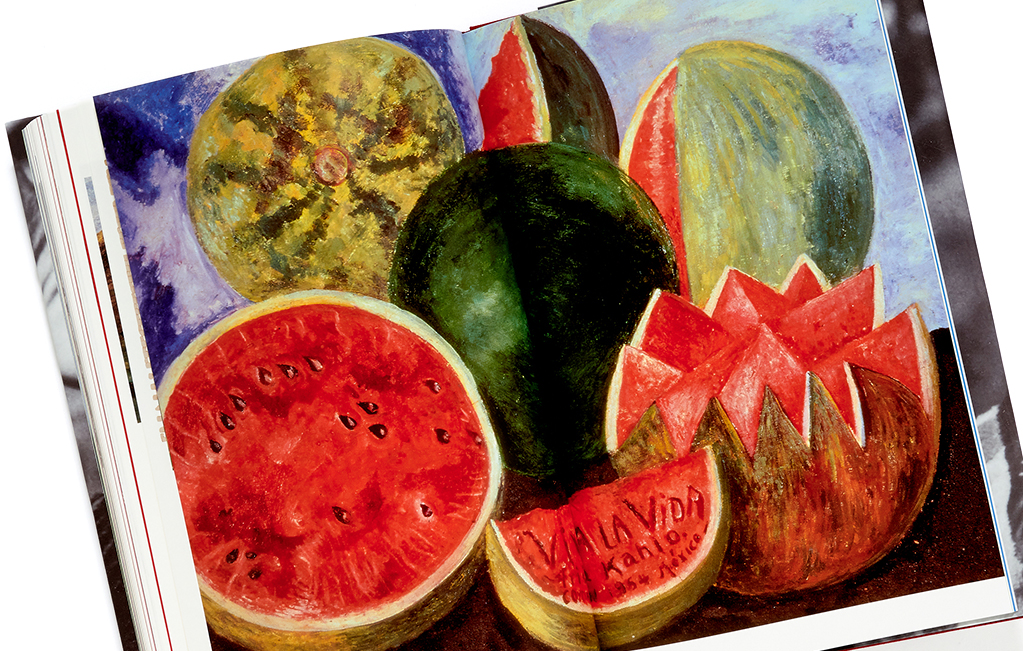
Viva la vida, 1954. Detalle del Libro de Estudios de Los sueños de Frida Kahlo.
La sandía tenía para la artista un doble significado. Es, al mismo tiempo, un símbolo de su tierra (tiene los colores de la bandera mexicana) y representa la pasión por la vida a través del rojo vibrante de su interior.
Frida murió el 13 de julio de 1954, siete días después de su 47 cumpleaños. A pesar de todo el sufrimiento que experimentó en su breve vida, quiso despedirse con un mensaje positivo.
Los sueños de una gran artista
- Los sueños de Frida Kahlo: una obra exclusiva que nos permite asomarnos al universo íntimo de un icono del siglo XX. Los dibujos de la artista son la parte menos conocida de su producción plástica.
- Un estudio riguroso que reúne, por primera vez, un legado disperso de sueños trazados a lápiz, retratos secretos, fantasías, divertimentos privados, bodegones y bocetos dedicados a amigos y amantes.
- Edición limitada de solo 2998 ejemplares. La obra se compone de: el Libro de Arte, con 34 láminas a escala original; el Libro de Estudios, con más de 100 dibujos; y la Carpeta de Arte, con la reproducción de una gran lámina.
